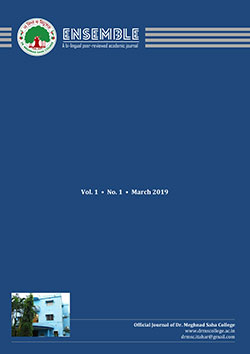A CRITICAL APPRECIATION OF ‘MULTIPLE INTELLIGENCES’: JUSTIFYING ITS APPLICABILITY IN THE TEACHING-LEARNING SYSTEM
Abstract:
Generally speaking, ‘intelligence’ refers to one’s ability to learn about, learn from, understand, and interact with one’s environment. In the first half of the 20th century, psychometric theorists like Spearman held that intelligence is a basic ability that determines the performance of all cognitive tasks and that it can be measured through IQ tests. On the other hand, the cognitive-contextual theory of intelligence that flourished in the second half of the last century held that cognitive processes operate in various environmental contexts. Among these theorists, possibly the most influential is Howard Gardner, who advanced the theory of ‘multiple intelligences’ (MI theory) in 1983. Refuting the age-old concept of intelligence as a single entity, Gardner held that there exists a multitude of intelligence, that are independent of each other, and that each intelligence has its strength and limitation. In the perspective of teaching-learning, MI theory recognizes each of the learners’ uniqueness in his/her own ability. It holds that each can flourish according to his/her area of strength if given the proper environment and opportunity. This theory makes educators rethink over organizing and reflecting on curriculum, assessment, and pedagogical practices in the classroom. However, the reorganization of the classroom environment based on MI theory has many practical constraints. Teaching-learning of beginners in a specially structured classroom with a few students might be a way out to design the education system according to MI theory. Due to these limitations, MI theory has remained, among significant parts of the academic fraternity, a theory only and not practicality.
Keywords: assessment, cognition, individualized learning, intelligence, MI theory, teaching-learning
https://doi.org/10.37948/ensemble-2020-0201-a020
Views: 9937



